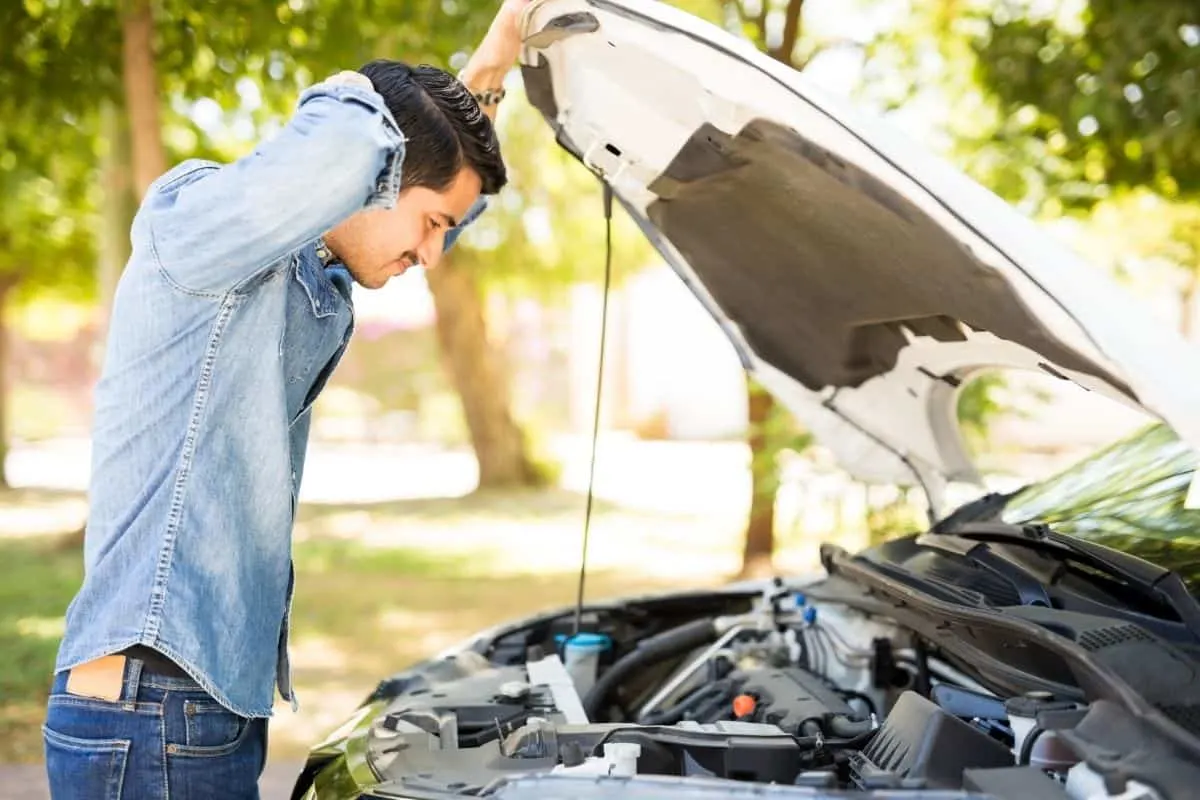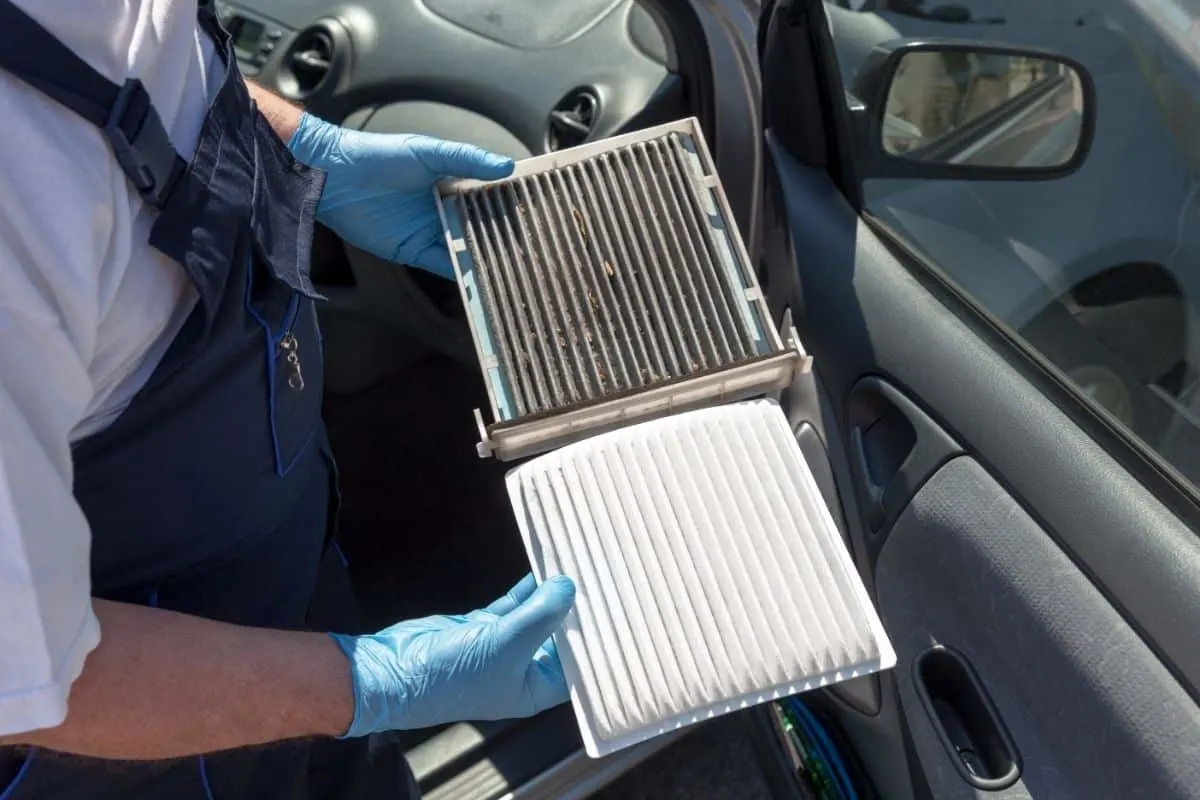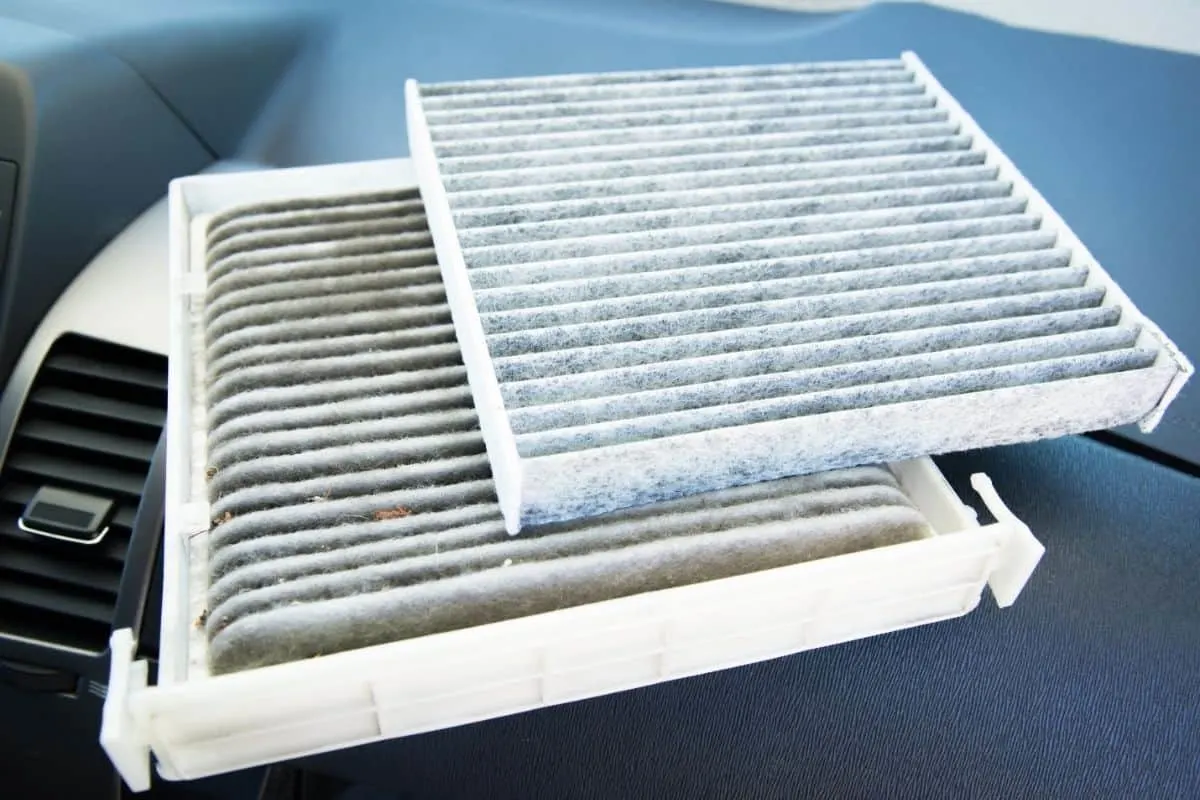Both longtime car enthusiasts and teenagers on their first knock-around vehicle often ask: How often should I change my cabin air filter? Many drivers don’t even know what a cabin air filter is, so let’s talk about how an air filter functions and how often you need to change it to keep your engine healthy.
Most vehicles need to have their cabin air filters replaced every 15,000 – 30,000 miles. In addition to variation by vehicle manufacturer, where you live and how you use the vehicle can also greatly impact the frequency with which the cabin air filter needs to be replaced.
Not all cars are the same, so filters last longer on some vehicles than on others. Let’s look at what signs to watch out for, and we’ll tell you how to change a cabin filter yourself if you don’t want to hire a mechanic.
Cabin Air Filter Change Frequency
As we stated above, you should change your cabin filter every 15,000 to 30,000 miles, but several factors may determine how soon it needs replacing.
If you live in the countryside and drive on rural roads with a lot of bugs, pollen, and dust, your filter won’t last as long as if you live in an urban environment. While cars in the city face more pollution, they usually encounter a lot less debris to clog up their cabin filters.
People who live in areas known for sand and dust will need to change their cabin filters more often since these elements are the leading causes of clogs in air filters.
That’s why luxury cars in Middle Eastern cities like Dubai and Abu Dhabi stay inside closed garages when no one is using them, unlike in Beverly Hills, where you often find BMWs and Mercedes Benzes parked on the street.
Changing your filter every 15,000 to 30,000 miles is a general recommendation from car manufacturers that test their cabin filters in a variety of simulated conditions.
For the most spot-on guidance on when to change your air cabin filter, consult your car’s manual and keep tabs on how many miles you drive, since you don’t want your next filter change to be the result of a broken AC or an overheated engine.

What Happens If You Don’t Change Your Air Filter?
The cabin air filter is the part of your engine responsible for cleaning the air coming through the HVAC system of your car. Your cabin filter keeps you from inhaling pollen, dust, bacteria, and debris while you drive.
Aside from regulating the breathability of your car’s interior, your cabin filter also filters the air that your car uses to cool down its engine. If your air filter gets clogged with leaves, bugs, and other objects you encounter on the road, your engine might overheat.
On some cars, you will notice a marked difference between a cabin filter and an air filter, but on most cars, they’re the same.
An air filter cleanses the air coming through the front of your vehicle and into your engine, while a cabin filter can be a separate part that filters the air coming through your hood and into the cockpit.
Because most car manufacturers meld the two together, driving your vehicle with a bad filter will cause twice the problems.
You will likely experience a reduced fuel economy as your engine starts consuming more gas to compensate for the lack of oxygen. If your car has a carburetor instead of an onboard computer that calculates the correct mixture of air and gas, your car might not start at all.
Your engine might refuse to start—or misfire—since the lack of air will cause unburned fuel to accumulate and then leave residue in your engine. After some time, this residue will coat your spark plugs, causing your engine to misfire, jerk, or refuse to start.
You might detect some unusual vibrations and sounds from your car, like popping and coughing noises when it’s stationary. These sounds result when soot residue is beginning to damage your spark plugs.
You might notice an active check engine light. Carbon deposits will start accumulating on your engine from the lack of available air, and at this point, you should arrange for a mechanic to look at your motor.
Your car may have reduced accelerating power and will sometimes jerk and rock when you push down on the accelerator. Most engines need 10,000 gallons of air for every gallon of gas, and if that air supply runs short, so will the accelerating power of your car.

How Do You Know if Your Air Filter Needs Changing?
Aside from the signs of engine trouble we’ve mentioned above, many other red flags can tell you if your air filter is out of commission.
Be sensitive to these signs since using a worn-out or overstuffed air filter can affect your engine longevity. It might cause damage to some parts that will be far costlier to replace than your cabin air filter.
Air filters have a direct connection to the parts of your engine responsible for starting up your car and keeping it running. So most of the signals that your air filter needs replacement will emanate from the startup response, ride pattern, and performance of your car.
For example, if you smell gas as you start your car, that might mean that either the fuel injection system or the carburetor is burning through the unspent fuel still inside your engine.
As your vehicle compensates for its lack of oxygen by using more gas, a surplus will remain when you turn it off. Your car will try to burn or expel this surplus through the tailpipe the next time you start it up.
Another example is when you see black fumes coming out of your exhaust, which you can also attribute to the unused fuel stuck inside your engine.
You should have this fixed right away, or your engine might suffer grave damage—especially if you start hearing loud pops or see flames coming out of the tailpipe.
Some minor signs of a clogged cabin air filter include:
- Little to no air circulation inside your car when the windows are up
- Weak performance of the climate control system
- A faint, lingering odor inside the cabin that doesn’t go away for days
- A whistling sound from the engine area as your drive

How to Change a Cabin Air Filter
Opening up a car’s engine bay is a frightening and time-consuming prospect for non-mechanics, but you won’t need to do so to replace your car’s cabin air filter.
The filter itself is behind your car’s glove box, so here’s how you can reach in and take it out:
- Open your glove compartment and empty it.
- Reach to the right inside the glove box, where you will feel a limiting arm. Guide it until it slides off the pin.
- Squeeze the back and front of your glove box until it’s free from the side clamps. Remove it from the car.
- You will see a faceplate. Your air filter will be directly behind it.
- Remove the faceplate by releasing it from its side latches, then pull out the old air filter.
- Clean the air filter chamber with a vacuum and a damp towel. If you see a cracked seal or gasket inside, be sure to replace them before installing the new filter.
- Install a new air filter that matches your car’s make and model. It should come with a faceplate that you can install in place of the old one.
- Reinstall the glove compartment and secure it using the limiting arm.
In summary, we hope that we’ve helped you better understand the importance of maintaining your car’s cabin air filter to ensure that you have a long and comfortable partnership with your car.
